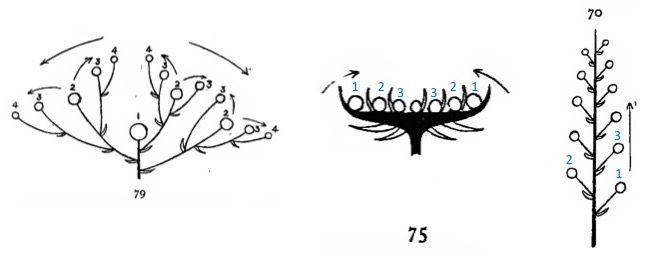Inflorescences in which the apical flower matures first
In some inflorescences, the apical meristem of a flowering stem produces a flower and stops growing. The flower is terminal.
Solitary flowers
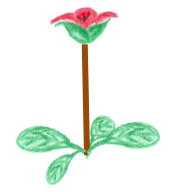
Solitary flowers may be produced by apical meristem on the main axis of a plant (above)
... or by the apical meristem of a branch (below). If branches produce solitary flowers, the flowers are found in the axils of leaves. In both cases, the flower is terminal, the last thing produced by the apical merstem of the flowering stem, and the flowering branch or stem stops growing.
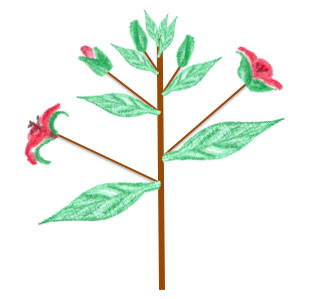
Cymes
Cymes are similar to solitary flowers in that the first flower to bloom is a terminal flower. However, a cyme produces additional flowers on lateral branches below (proximal to) the terminal flower.
The simplest cyme has three flowers: an older terminal flower, and two younger flowers on branches below it. This is often called a dichasium.
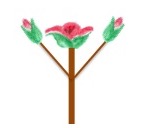
More highly branched cymes occur on many species, but the developmental pattern is the same: each branch stops growing when it produces its first, terminal flower, and further flowers are produced on two branches below that flower:
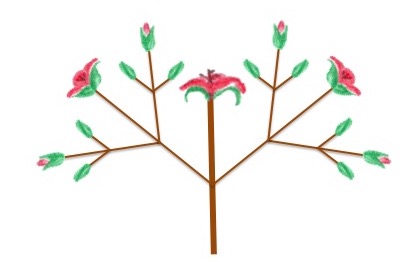
In some species, cymes produce only one branch below the terminal flower. Where branches are repeatedly produced to one side of the inflorescence, the result is a coiled inflorescence, or coiled cyme:
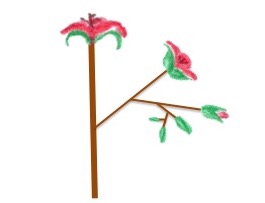
Coiled cymes often look as if the youngest flower is at the tip of a continuously growing, coiling raceme. Developmentally, however, the oldest flower is terminal and subsequent flowers are produced repeatedly on branches.
Check your understanding:
